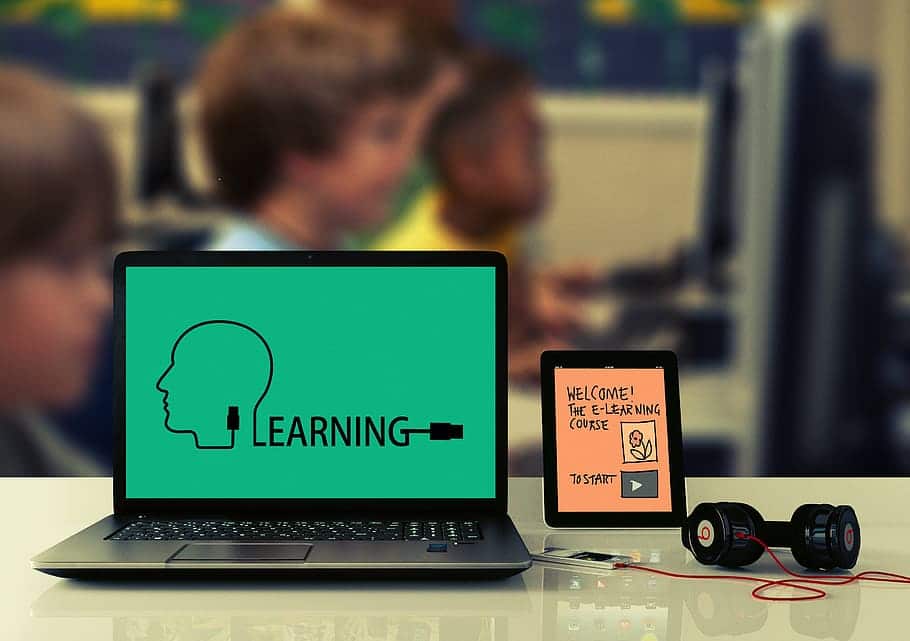Though online education has been here for quite a few years, it did not find a market to grow. It was only last year in 2020 after the COVID-19 global pandemic hit the world, the education sector, like all other sectors, found an impetus to migrate to online platforms to bring teachers and learners together virtually. The pandemic compelled people including students and teachers to stay indoors. The purpose was to break the chain of infection and prevent people from getting infected. Away from school/colleges, meant away from not just studies, but from routine life, daily activities, and even friends. All this led to a lack of reasons to remain motivated. It was a difficult task for students to deal with this time of uncertainty. And then to compensate for everything came the idea of online education and online engagement. Students who were not acquainted previously with this form of education saw it as a major obstacle on their way to easy and effective communication and found it challenging to respond. Academic institutions and instructors then turned to technology to find solutions that could close the gap between teachers and learners to its maximum potential. This article will highlight how to spot struggling students and guide them in the right direction. Before the pandemic forced us to switch to online education platforms, instructors or mentors did not find it difficult to spot struggling students. Classes were conducted face to face, and hence it was easier to gauge the depth of a student’s understanding level. The online module isn’t new, but it has become prevalent now due to the imposition of social distancing as a COVID-19 protocol to stop the spread of the virus. In an online module, classes are conducted virtually. Therefore, it is challenging for teachers to read the minds and faces of the students. However, if newly designated online instructors are provided with proper professional development and training in online education, they can efficiently contribute to students’ academic success. In addition, mentors or instructors guiding struggling students must possess skills in observation, empathy, and direction to help them with necessary resources. While taking classes face-to-face, teachers can detect struggling students quickly. They mostly appear uncomfortable on their seats, look disgruntled, detached and may even bend in their chairs, look here and there or hide their faces while they sleep. There can be many reasons for such behaviour. Some may not find the environment comfortable, some may have violent and quarrelsome parents at home, some may have financial problems, some may find the atmosphere hostile, and many other reasons put students through difficult times. If a teacher is trained to figure out why a student is struggling, it can be easier for them to help them in coming out of that problem. Once the root cause of their behaviour can be known, a teacher can plan how to deal with it and make them comfortable. A face-to-face demonstration can help instructors quickly spot and help a struggling student. But, online Instructors have to become alert, empathetic listeners and come up with resources and solutions to guide students online efficiently. However, for somebody new to online teaching, it will be a challenge to spot and support struggling students. Fortunately, there are several online mediums and mobile apps to close the gap between teachers and students. For example, the Learning Management System (LMS) mobile apps offer visual indicators feature that can detect students facing difficulty. One can seldom see the behaviour of students in an online classroom. It won’t be easy to see behaviours that show discomfort, disinterest, dullness, fear, or anxiety unless we record their every movement to detect them later in the video. In synchronous live chats, learners or students may not attend meets or even choose to turn off their cameras. To help struggling students online, we first need to know how to spot them. Next, we must try to find out what troubles them. Only then we can provide resources and extend support. With COVID-19, students are more stressed than ever. Sitting in closed houses taking classes fully online without any interaction with the outer world can be stressful and harmful to mental health. Therefore, anxiety, fatigue, and depression are common among students. Moreover, the pandemic has made the entire education system awful due to unrest and uncertainties. Students are most affected due to irregularities that seized them from all sides. So, within limited resources keeping them stress-free and relaxed is essential. Nobody knows when we will be back to everyday life. Therefore, it is vital to make use of whatever online resources we have and prioritise struggling students. Students find it hard to concentrate and focus on their studies in this challenging time, and hence online students grapple with completing courses, programs, and degrees. It is essential to ask learners for detailed feedback and help them calm their minds and boost their morale. Also, give them advice and proper guidance for academic and vocational success. Instructors and mentors must keep in mind, not all whom you guide will succeed, but if we work to keep them motivated, we can assuredly improve their chances of a successful future. Online students struggle due to many reasons. At times they find it challenging to stay motivated, lose focus and fail to remain engaged. It is pretty often; they do not get required and detailed feedback. Thus it becomes difficult to meet their expectations. Sometimes when students face obstacles, they struggle alone as they find it difficult to reach out to their mentor and instructors for help. They will avoid interacting and engaging in any activity to avoid the situation. Many times, you will find them skipping classes and even avoid asking questions when in a problem. You will find them either looking here and there when in class, or you will find them looking for lame excuses. They avoid participating in any activity be it studies or for fun. The only motive in the class for them would be to stay away from all activities as much as possible. Online education requires special skills, and it also includes the ability to manage time efficiently. Online students need contact motivation. Students who were into the regular physical classroom environments and now compelled into distance education may not find online classes motivating and may quickly lose the determination to sail through it alone at home. We need to overcome that. LMS mobile apps come with an activated alert system. You will hear bells and whistles — messages or acronyms appear next to a student’s name on the roster. Last Date of Attendance (LDA) is a component to track students online. In physical classrooms, teachers take attendance regularly, but it is usually tracked automatically in online classrooms. So, you receive an alert if a student has been missing for a few days or even weeks from the classes. Just logging into the mobile app does not count as available in the class. To make the attendance count, students have to reply to discussion boards, post something within the classroom, or work on assignments. Though students are not punished for absence, presence is essential for success. Online courses are fast-paced, and once many students find it difficult to catch up on missing assignments if they miss classes for days. Learning Management System mobile apps are ideally equipped with all necessary features to effectively cater to the online education industry. Newly introduced or trained online faculty must work to fight the challenges of operating an LMS. The focus should be on learning new technologies, managing time more efficiently, and many other unique and different duties and responsibilities. In the recent unexpected switch to online modalities and teaching methods, if the instructors and mentors have not considered struggling students as a matter of grave concern, they should. Experienced online faculties and instructors have been trained to detect, spot, and provide support to students. These seasoned instructors can be a great source to provide LMS training to newly introduced and relocated online faculties. Edsby is the most comprehensive single learning and analytics platform designed for K-12 school districts and regional governments. Canvas is a Learning Management System app for educational institutions built with all-inclusive features for both educators use and learners. MyClass Campus is a cloud-based school administration software designed to provide educational institutions with features like – manage admissions, timetables, students’ inquiries, grievances, study lessons, hostels, human resource management, results, and more. Everything is handled on a single platform. Procare Solutions is the number 1 name in child care management software. It allows contactless check-in/out, integrated tuition collection, business management tools, and more. A secure Learning Management System (LMS) mobile application is useful for training programs that are fun, accessible, simple, and transformative. Courseplay mobile app is a scalable learning technology solution for enterprises to train, engage, automate workflow and accurately measure impact for those using any device. TalentLMS is a powerful and straightforward way to build courses, share them with your teams, and track progress from any comfortable place. eFront is a powerful Learning Management System to train your people, partners, and customers that can shape to fit their needs. evolCapmpus is a learning management system mobile app for businesses, NGOs, and academic institutions, helping them create courses in different formats and provide training to students and employees. It is not easy to spot online students, but the above information in this blog can help reach out to struggling students and help them adjust to an online model. Moreover, even instructors and mentors should be trained to create, revise, and teach their online courses effectively. They must also acquaint the students with the learning management system and mobile application software to benefit the online students.
Online Education – the New Normal
Introduction
What are the Traits of Struggling Students?
What Can Make Them Comfortable?
How Helpful are Online Mobile Apps?
Limited Resources and Possibilities in COVID-19
How to Detect if Students are Struggling?

Online Learning Management System (LMS)

Some LMS Mobile Apps You Can Look Out for:-

Edsby

CANVAS
MyClassCampus


Procare Solutions
SAP Litmos


Courseplay
TalentLMS

 eFront
eFrontevolCampus

Wrap Up